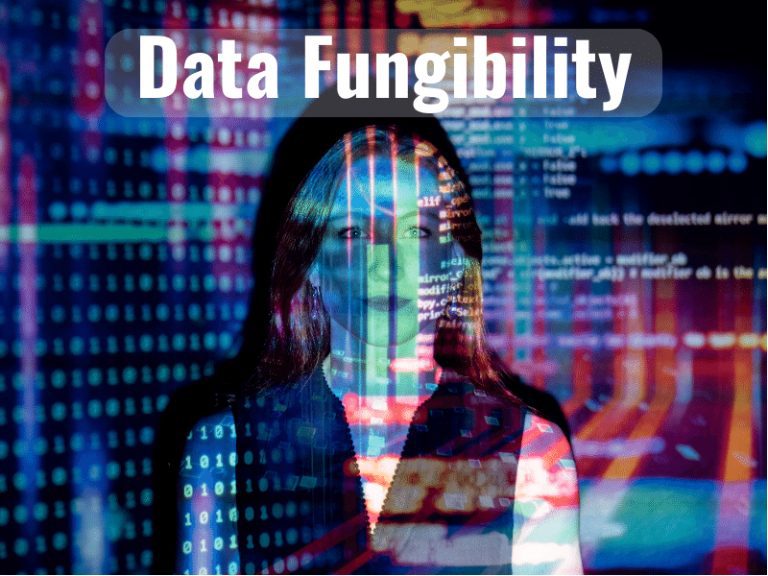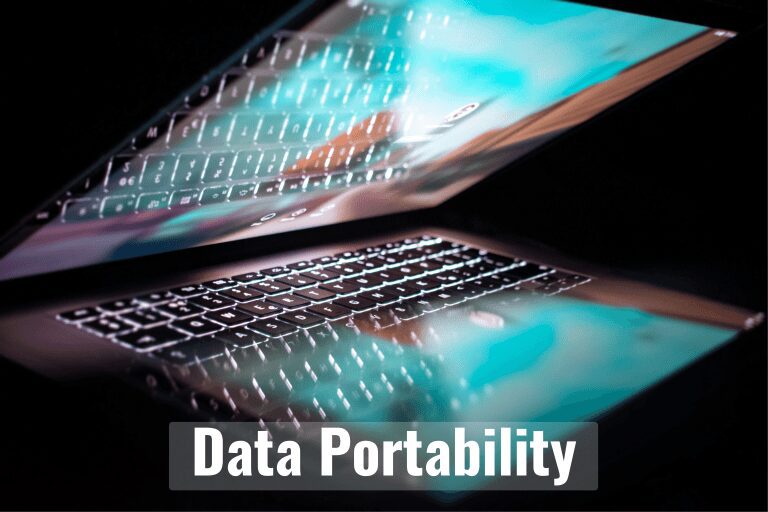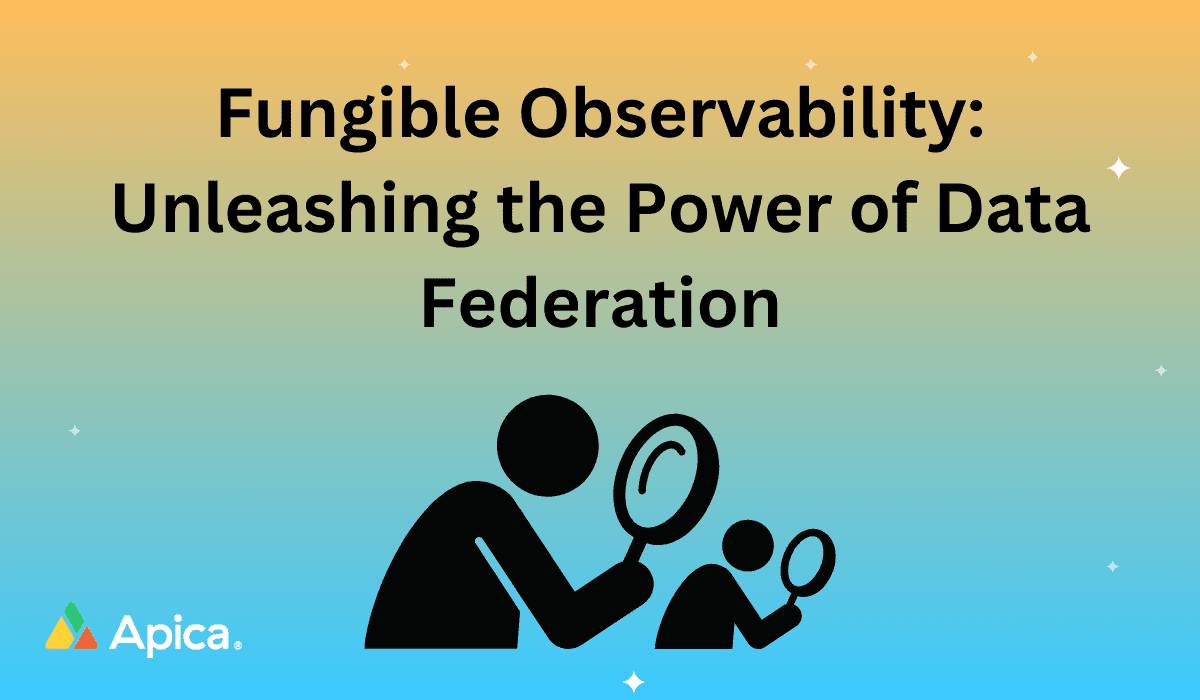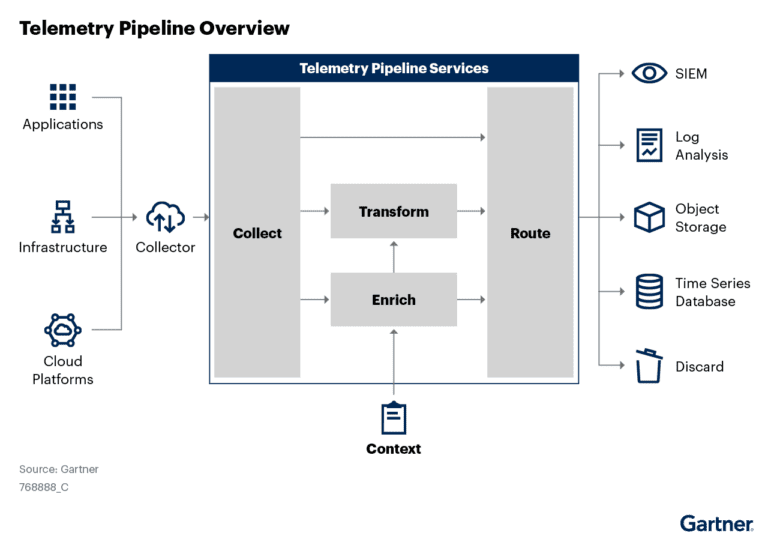A survey of 114 participants revealed that as computing resources move from on-premise to the cloud, the issue of vendor lock-in becomes more severe, in a study published in the Journal of Cloud Computing.
Fungibility was a huge buzzword over the last two years with the whole NFT mania. Chances are that you might’ve dabbled with it a bit yourself. The notion of Fungible Observability emerges from the same grounds, in one way or another.
Now in 2023, although NFTs may have lost their charm, the idea of fungibility is here to stay.
You see, fungible things had existed way before the advent of the NFT wave. Be it currencies, bonds, stock shares, or even digital assets for that matter. It’s simply a fancy way to describe the interchangeability or indistinguishability of items within a group or category.
So let’s stop beating around the bush and talk about Fungible Observability.
What is Fungible Observability?

In today’s rapidly evolving digital landscape, businesses rely heavily on data-driven insights to make informed decisions and gain a competitive edge.
Observability platforms play a crucial role in collecting and analyzing vast amounts of data, enabling organizations to monitor their systems, detect anomalies, and optimize performance.
However, the ability to seamlessly migrate data across platforms has often been a significant challenge, leading to vendor lock-in and inhibiting innovation.
Enter the concept of “Fungible Observability,” a monitoring paradigm that promotes data portability without friction. Not only is it innovative but a necessity for businesses who want to leverage their data authority.
Simply put, fungible observability is a means to facilitate the seamless movement and exchange of data across different systems and environments, minimizing barriers and friction.
In other words, it focuses on ensuring the portability and interoperability of observed data, allowing for effortless integration and analysis across diverse monitoring tools, platforms, and frameworks.
In fungible observability, data is treated as a highly adaptable and transferable asset, much like a fungible commodity that can be readily exchanged without losing its value or functionality. This approach aims to eliminate the need for complex and time-consuming data transformations or custom integrations when transitioning between monitoring solutions, enabling organizations to leverage the best tools for their specific needs while maintaining continuity in data analysis and insights.
Fungible Observability with Apica
At apica.io, we empower users with the freedom to leverage their data across various platforms effortlessly. Our Data Fabric solution is built on the idea that data should be available to everyone, everywhere. With Fungible Observability, our customers can reap the benefits of their data, regardless of the platform.
Apica enables users to seamlessly migrate their observable data between platforms without compromising quality or having to reformat it. This means that users can leverage their data for different solutions while preserving the integrity and structure of their data.
Furthermore, it eliminates the need to manually enter, reformat or extract information from disparate sources.
Unlike traditional observability platforms that lock users into proprietary ecosystems, Apica ensures the utmost data portability, allowing users to export their data effortlessly and integrate it with any other platform of their choice.
By prioritizing interoperability, Apica revolutionizes how organizations utilize and share their data, fostering a dynamic and flexible environment for growth and innovation.
Breaking the Chains of Vendor Lock-In
Vendor lock-in has long been a concern for organizations seeking to adopt new technologies or migrate their data to different platforms. The lack of interoperability and data portability prevents businesses from easily transitioning between vendors, leading to high switching costs, limited flexibility, and loss of control over valuable data.
In the early days of its service, Apple implemented a clever strategy that exemplified the practice of vendor lock-in. They tightly bound consumers by establishing a dependency on iTunes. This meant that music purchased through iTunes could only be enjoyed within the confines of the iTunes application or on an iPod. It was a real-world illustration of how vendor lock-in worked, demonstrating the tangible limitations imposed on users.
Fungible observability aims to overcome such challenges by eliminating the barriers to data movement, enabling users to seamlessly transfer their valuable insights across platforms.
With platforms abiding by the rules of fungible observability, users can freely switch between vendors without suffering from data lock-in.
Additionally, users gain access to a host of features and benefits that weren’t previously available. As a result, they have full authority over their valuable data and can customize it as needed.
The Power of Fungible Observability

The true power of Fungible Observability lies in its ability to bring together disparate data streams and siloed insights into a unified ecosystem.
By integrating monitoring and observability tools across various layers of infrastructure, applications, and services, businesses can gain a comprehensive understanding of their entire ecosystem’s health and performance.
This unified view empowers teams to identify correlations, troubleshoot issues efficiently, and uncover hidden opportunities for optimization and innovation.
The following are the noteworthy benefits of fungible observability:
- 1. Increased Flexibility: With fungible observability, businesses can freely experiment with different platforms and tools without fear of data silos or lock-in. This newfound flexibility enables organizations to select the best-of-breed solutions for unique requirements, promoting agility and driving innovation.
- 2. Cost Efficiency: By promoting data portability, fungible observability eliminates the need for time-consuming and resource-intensive data migration projects. Organizations can seamlessly transition to new platforms, significantly reducing costs associated with vendor lock-in and enabling efficient resource allocation.
- 3. Collaboration and Ecosystem Expansion: Fungible observability paves the way for enhanced collaboration and knowledge sharing among different teams and organizations. By facilitating the seamless exchange of data across platforms, it encourages the creation of vibrant ecosystems, where diverse stakeholders can collaborate, integrate, and leverage collective insights for mutual growth.
- 4. Future-Proofing: In a rapidly evolving technological landscape, being able to adapt quickly is crucial. Fungible observability ensures that businesses can stay ahead by effortlessly integrating emerging technologies and platforms into existing infrastructure, consecutively future-proofing operations, and maximizing competitive advantage.
Why embrace Fungible Observability?
Fungible observability marks a significant shift in how we approach data portability and vendor lock-in in the observability space. Platforms like ours exemplify the power of this paradigm by prioritizing data freedom and empowering users to move seamlessly across platforms without friction.
By promoting data portability without friction, fungible observability enhances flexibility and agility in monitoring ecosystems.
It empowers teams to switch or combine monitoring tools seamlessly, fostering innovation and adaptability while avoiding vendor lock-in. This paradigm emphasizes the importance of standardized data formats, open APIs, and interoperable protocols to ensure the smooth interchange of observability data, ultimately enabling organizations to harness the full potential of their monitoring infrastructure.
With the ability to leverage data with any other platform, businesses can unlock new possibilities, fuel innovation, and drive meaningful business outcomes.
Thus, embracing fungible observability opens up a world of opportunities, enabling businesses to break free from limitations and forge your own path to success.



